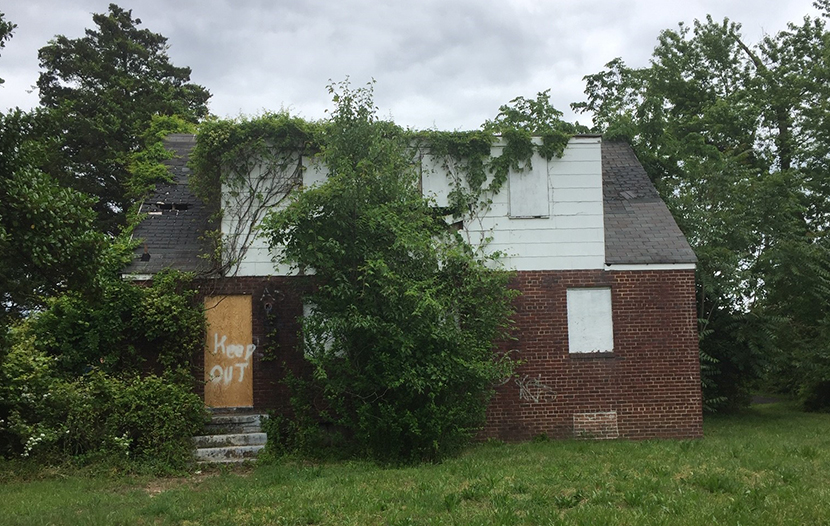
‘Zombie’ Property Stats Hold Steady Amid Foreclosure Moratorium

ATTOM Data Solutions, Irvine, Calif., said the percentage of “zombie” properties—vacant properties facing foreclosure—held steady in the second quarter as nationwide moratoria on foreclosures kept activity to a minimum.
The company’s second-quarter Vacant Property and Zombie Foreclosure Report showed that 1.5 million residential properties in the United States are vacant, representing 1.5 percent of all homes. Nearly 258,000 homes are in the process of foreclosure, with 7,650, or 3 percent, sitting empty as so-called ‘zombie foreclosures’ in the second quarter. The percentage of zombie foreclosure properties is down slightly from 3.1 percent in the first quarter.
ATTOM said the total count of properties in the process of foreclosure (258,024) in the second quarter is down 8.8 percent from the first quarter (282,767). The 7,652 zombie properties represent one of every 13,000 homes in the nation’s stock of 99.2 million residential properties.
Todd Teta, chief product officer with ATTOM Data Solutions, said the second-quarter foreclosure and zombie property numbers have dropped since the first quarter amid a federal prohibition against lenders foreclosing on government-backed mortgages until at least June 30,. The ban, which affects about 70 percent of home loans in the United States, was enacted under the CARES Act and extended this month to help borrowers affected by the coronavirus pandemic.
“The foreclosure and zombie-property picture hasn’t changed much in the second quarter of this year as most lenders are barred from taking action against homeowners who are falling behind on their mortgages. We are in a holding pattern across the country as long as the moratorium continues,” Teta said. “At some point, that will have to be lifted, so that banks can make their own decisions about whether to continue delaying foreclosures while the economy recovers. When that will happen is unknown, but that’s the point when we will see if foreclosure activity will remain at very low levels or rise.”
Key report findings:
–7,652 residential properties facing possible foreclosure have been vacated by their owners nationwide in the second quarter. States where the percentage of zombie foreclosures are above the national average of 3 percent include Ohio (6.7 percent), New Mexico (5.5 percent), Indiana (4.8 percent), Illinois (4.7 percent) and Iowa (4.5 percent). The lowest rates – all less than 1.3 percent – are in South Dakota, Idaho, New Hampshire, Utah, New Jersey, Connecticut and Colorado.
–New York continues to have the highest actual number of zombie properties (2,158), followed by Florida (1,136), Ohio (877), Illinois (868) and New Jersey (302).
–Among 158 metropolitan areas with at least 100,000 residential properties, Peoria, Ill., continues to have the highest percentage of zombie foreclosures at 12.9 percent, followed by Cleveland (11 percent); Syracuse, N.Y. (8.9 percent); St. Louis (7.8 percent) and Honolulu (7.8 percent).
–Among major metro areas with at least 500,000 residential properties, the lowest zombie foreclosure rates are in San Francisco (0.6 percent); Austin, Texas (0.8 percent); Philadelphia (1.1 percent); Phoenix (1.3 percent) and Boston (1.4 percent).
-The top zombie foreclosure rates in counties with at least 500 properties in foreclosure include Cuyahoga County (Cleveland), Ohio (12.8 percent); Broome County (Binghamton), N.Y. (10.1 percent); Saint Clair County, Ill. (outside of St. Louis) (9.5 percent); Onondaga County (Syracuse), N.Y. (9.3 percent) and Madison County, Ill. (outside of St. Louis) (8.9 percent).
–The highest levels of vacant investor-owned homes are in Indiana (8.4 percent), Kansas (6.6 percent), Ohio (6.3 percent), Minnesota (6.1 percent) and Mississippi (5.8 percent).
–The highest overall vacancy rates for all residential properties continue to be in Kansas (2.6 percent), Tennessee (2.6 percent), Mississippi (2.6 percent), Oklahoma (2.6 percent) and Indiana (2.5 percent). The lowest remain in New Hampshire (0.4 percent), Vermont (0.4 percent), Delaware (0.5 percent), Idaho (0.6 percent) and North Dakota (0.7 percent).
